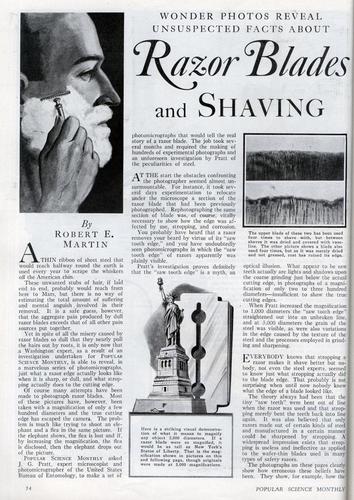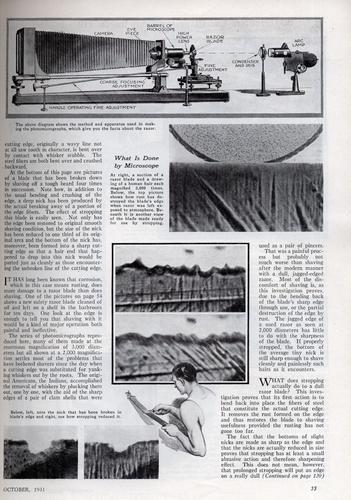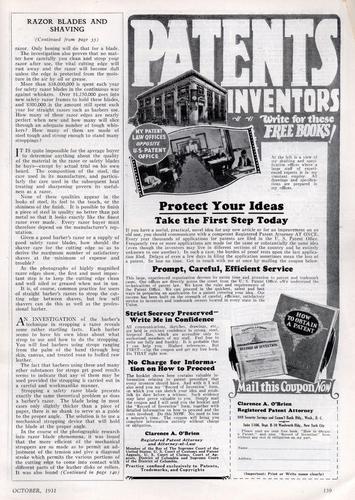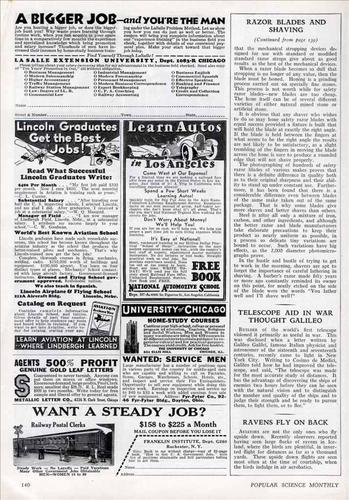Results 51 to 60 of 80
Thread: Douglas cutlery
-
06-22-2013, 06:23 PM #51

Birnando, english is not my 1st language neither.
I do love my wife, this axiom is absolute truth. Yet, it couldn't be predicted by science, nor been fully explained.
I just tell it to you. And you choose to rely on it or not. No science involved.
Yet you weave with much wit your words of science with rhetorics. Wit and condescension also, which is pretty much irritating by the way. Originally Posted by Gugi
Originally Posted by Gugi
Semantics is a matter of science though. You should sometimes try and get interested in it.
And lastly : I do not ADRESS to people, I talk to whoever feels like talking to me.Last edited by dudness; 06-22-2013 at 07:59 PM.
Tired of the ‹berlather ? Try the Unterlather !
-
06-22-2013, 06:43 PM #52
 Bjoernar
Bjoernar
Um, all of them, any of them that have been in front of me over all these years....
-
06-22-2013, 07:59 PM #53

Edited.
 Tired of the ‹berlather ? Try the Unterlather !
Tired of the ‹berlather ? Try the Unterlather !
-
06-23-2013, 02:07 AM #54

Here’s part 1 (there will be more) of my response.
This is an article from Popular Science Oct 1931 I’ve included photos of the original article at the end of the text. All photos referenced in the article are visible and reasonable discernible. I’ve highlighted some appropriate passages. Here are some of the conclusions I made from this article.
1. No one really knew what a razors edge looked like or how they dulled before 1931 and the greatest razors in history where made on false assumptions not based in science. By the way, science is just the current understanding and not “truth” science changes almost every day. Example. Pre 1998/2006 “the universe will stop expanding and collapse.” Post 1998/2006 “The universe is expanding at an ever faster rate and will never collapse because there is not enough matter to halt the expansion.” Which one is “TRUTH”
2. The edge, when dulled by use, is chipped, bent, and broken by the contact with the beard, even to an extreme amount after just four uses. (This does not apply to dulling due to storage). Carbon-Chromium will resist this kind of damage.
3. Stropping “bends” the edge back into place. Conclusion, that it further weakens the bent edges. I think this part is just common sense as any child who has played with a paper clip will attest.
4. Dulling due to storage is from corrosion, a corrosion resistant steel such as Carbon-Chromium will reduce this type of damage.
5. Cutsomer reviews do matter.
WONDER PHOTOS REVEAL UNSUSPECTED FACTS ABOUT Razor Blades and Shaving
(Popular Science Oct, 1931)
By Robert E. Martin
A THIN ribbon of sheet steel that would reach halfway round the earth is used every year to scrape the whiskers off the American chin.
These unwanted stubs of hair, if laid end to end, probably would reach from here to Mars, but there is no way of estimating the total amount of suffering and mental anguish involved in their removal. It is a safe guess, however, that the aggregate pain produced by dull razor blades exceeds that of all other pain sources put together.
Yet in spite of all the misery caused by razor blades so dull that they nearly pull the hairs out by roots, it is only now that a Washington expert, as a result of an investigation undertaken for Popular Science Monthly, is able to reveal, in a marvelous series of photomicrographs, just what a razor edge actually looks like when it is sharp, or dull, and what stropping actually does to the cutting edge.
Of course many attempts have been made to photograph razor blades. Most of these pictures have, however, been taken with a magnification of only a few hundred diameters and the true cutting edge has escaped the camera. The problem is much like trying to shoot an elephant and a flea in the same picture. If the elephant shows, the flea is lost and if. by increasing the magnification, the flea is disclosed, then the elephant drops out of the picture.
Popular Science Monthly asked J. G. Pratt, expert microscopist and photomicrographer of the United States Bureau of Entomology, to make a set of photomicrographs that would tell the real story of a razor blade. The job took several months and required the making of hundreds of experimental photographs and an unforeseen investigation by Pratt of the peculiarities of steel.
AT THE start the obstacles confronting the photographer seemed almost unsurmountable. For instance, it took several days experimentation to relocate under the microscope a section of the razor blade that had been previously photographed. Rephotographing the same section of blade was, of course, vitally necessary to show how the edge was affected by use, stropping, and corrosion.
You probably have heard that a razor removes your beard by virtue of its “saw tooth edge.” and you have undoubtedly seen photomicrographs in which the “saw tooth edge” of razors apparently was plainly visible.
Pratt’s investigation proves definitely that the “saw tooth edge” is a myth, an optical illusion. What appear to be sawteeth actually are lights and shadows upon the coarse grinding just below the actual cutting edge, in photographs of a magnification of only two to three hundred diameters‚€”insufficient to show the true cutting edges.
When Pratt increased the magnification to 1,000 diameters the “saw tooth edge”, straightened out into an unbroken line, and at 3,000 diameters the grain of the steel was visible, as were also variations in the edge caused by the texture of the steel and the processes employed in grinding and sharpening.
EVERYBODY knows that stropping a razor makes it shave better but nobody, not even the steel experts, seemed to know just what stropping actually did to the blade edge. That probably is not surprising when until now nobody knew what the edge of a blade looked like.
The theory always had been that the tiny “saw teeth” were bent out of line when the razor was used and that stropping merely bent the teeth back into line again. It was also believed that only razors made out of certain kinds of steel and manufactured in a certain manner could be sharpened by stropping. A widespread impression exists that stropping is useless and ineffective as applied to the wafer-thin blades used in many types of safety razors.
The photographs on these pages clearly show how erroneous these beliefs have been. They show, for example, how the cutting edge, originally a wavy line not at all saw tooth in character, is bent over by contact with whisker stubble. The steel fibers are both bent over and crushed backward.
At the bottom of this page are pictures of a blade that has been broken down by shaving off a tough beard four times in succession. Note how, in addition to the usual bending and crushing of the edge, a deep nick has been produced by the actual breaking away of a portion of the edge fibers. The effect of stropping this blade is easily seen. Not only has the edge been restored to original smooth shaving condition, but the size of the nick has been reduced to one third of its original area and the bottom of the nick has, moreover, been formed into a sharp cutting edge so that a hair end that happened to drop into this nick would be parted just as cleanly as those encountering the unbroken line of the cutting edge.
IT HAS long been known that corrosion, which in this case means rusting, does more damage to a razor blade than does shaving. One of the pictures on page 54 shows a new safety razor blade cleaned of oil and left on a shelf in the bathroom for ten days. One look at the edge is enough to tell you that shaving with it would be a kind of major operation both painful and ineffective.
The series of photomicrographs reproduced here, many of them made at the enormous magnification of 3,000 diameters but all shown at a 2,000 magnification settles most of the problems that have bothered shavers since the day when a cutting edge was substituted for yanking whiskers out by the roots. The original Americans, the Indians, accomplished the removal of whiskers by plucking them out, one by one, with the aid of the sharp edges of a pair of clam shells that were used as a pair of pincers. That was a painful process but probably not much worse than shaving after the modern manner with a dull, jagged-edged razor. Most of the discomfort of shaving is, as this investigation proves, due to the bending back of the blade’s sharp edge through use, or the partial destruction of the edge by rust. The jagged edge of a used razor as seen at 2,000 diameters has little to do with the sharpness of the blade. If properly stropped, the bottom of the average tiny nick is still sharp enough to shave cleanly and painlessly such hairs as it encounters.
WHAT does stropping actually do to a dull razor blade? This investigation proves that its first action is to bend back into place the fibers of steel that constitute the actual cutting edge. It removes the rust formed on the edge and thus restores the blade to shaving usefulness provided the rusting has not gone too far.
The fact that the bottoms of slight nicks are made as sharp as the edge and that the nicks are actually reduced in size proves that stropping has at least a small abrasive action and therefore sharpening effect. This does not mean, however, that prolonged stropping will put an edge on a really dull (Continued on page 139) razor. Only honing will do that for a blade.
The investigation also proves that no matter how carefully you clean and strop your razor after use, the vital cutting edge will rust away and the razor will become dull unless the edge is protected from the moisture in the air by oil or grease.
More than $38,000,000 is spent each year for safety razor blades in the continuous war against whiskers. Over $1,250,000 goes into new safety razor frames to hold these blades, and $700,000 is the amount still spent each year for straight razors such as barbers use. How many of these razor edges are nearly perfect when new and how many will slice through an adequate number of tough whiskers? How many of them are made of steel tough and strong enough to stand many strappings ?
IT IS quite impossible for the average buyer to determine anything about the quality of the material in the razor or safety blades he buys except by actual trial on his own beard. The composition of the steel, the care used in its manufacture, and particularly the care used in the subsequent heat treating and sharpening govern its usefulness as a razor.
None of these qualities appear in the looks of steel, its feel to the touch, or the shininess of the finish. It is possible to finish a piece of steel in quality no better than pot metal so that it looks exactly like the finest razor ever made. Every razor buyer must therefore depend on the manufacturer’s reputation.
Given a good barber’s razor or a supply of good safety razor blades, how should the shaver care for the cutting edge so as to derive the maximum number of satisfactory shaves at the minimum of expense and trouble?
As the photographs of highly magnified razor edges show, the first and most important step is to keep the cutting edge clean and well oiled or greased when not in use.
It is, of course, common practice for users of straight barber’s razors to strop the cutting edge between shaves, but few self shavers can do this as well as the professional barber.
AN INVESTIGATION of the barber’s technique in stropping a razor reveals some rather startling facts. Each barber seems to have his own ideas about what strop to use and how to do the stropping. You will find barbers using strops ranging from the palm of the hand through hog skin, canvas, and treated roan to buffed raw leather.
The fact that barbers using these and many other substances for strops get good results seems to indicate that any of them may be used provided the stropping is carried out in a careful and workmanlike manner.
Stropping a safety razor blade presents exactly the same theoretical problem as does a barber’s razor. The blade being in most cases only slightly thicker than a piece of paper, there is no shank to serve as a guide to the proper angle. The solution is to use a mechanical stropping device that will hold the blade at the proper angle.
In the course of the photographic research into razor blade phenomena, it was found that the more efficient of the mechanical stroppers are so made as to permit an adjustment of the tension and give a diagonal stroke which permits the various portions of the cutting edge to come into contact with different parts of the leather disks or rollers. It was also found (Continued in page 140) that the mechanical stropping devices designed for use with standard or modified standard razor strops give about as good results as the best of the mechanical devices. When a razor blade becomes so dull that stropping is no longer of any value, then the blade must be honed. Honing is a grinding process carried out on specially fine stones. This process is not worth while for safety razor blades‚€”new blades are too cheap. The hone itself can be of several different varieties of either natural mined stone or artificial stone.
It is obvious that any shaver who wishes to do so may hone safety razor blades with equal success provided a fixture is built that will hold the blade at exactly the right angle. If the blade is held between the fingers at what seems to be the right angle the results are not likely to be satisfactory, as a slight trembling of the fingers in moving the blade across the hone is sure to produce a rounded edge that will not shave properly.
The photographing of hundreds of safety razor blades of various makes proves that there is a definite difference in quality both as to their original sharpness and their ability to stand up under constant use. Furthermore, it has been found that there is a considerable difference even between blades of the same make taken out of the same package. That is why some blades give more shaves and better shaves than others.
Steel is after all only a mixture of iron, carbon, and other ingredients, and although the better razor and blade manufacturers take elaborate precautions to keep their product as nearly uniform as possible, in a process so delicate tiny variations are bound to occur. Such variations have big effects, as the 2,000 diameter photomicrographs prove.
In the hustle and bustle of trying to get to work in the morning, shavers are apt to forget the importance of careful lathering in shaving. A barber’s razor made fifty years or more ago constantly reminded its owner on this point, for neatly etched on the side of the blade were the words “You lather well and I’ll shave well!”




Last edited by bishpick1; 06-23-2013 at 02:28 AM.
-
The Following User Says Thank You to bishpick1 For This Useful Post:
DireStraights (06-03-2015)
-
06-23-2013, 03:19 AM #55Historically Inquisitive



- Join Date
- Aug 2011
- Location
- Upstate New York
- Posts
- 5,782
- Blog Entries
- 1
Thanked: 4249
1. No one really knew what a razors edge looked like or how they dulled before 1933.
The fact is in 1879 they were looking at razors edge with a microscope http://straightrazorpalace.com/honin...-use-hone.html Read the article! 54 years before your magazine came out!
-
The Following User Says Thank You to Martin103 For This Useful Post:
Hirlau (06-23-2013)
-
06-23-2013, 07:31 AM #56

"Of course many attempts have been made to photograph razor blades. Most of these pictures have, however, been taken with a magnification of only a few hundred diameters and the true cutting edge has escaped the camera"
Now I suppose we're going to discuss the difference between evidence and better evidence. That way we can continue to evade the point ad-nauseam. I did not write the above article in 1931, I was ask on what I based my conclusions, here's part 1. If you think this article is incorrect I would suggest you take that up with Popular Science.Last edited by bishpick1; 06-23-2013 at 08:37 AM.
-
06-23-2013, 08:58 AM #57
-
06-23-2013, 09:13 AM #58

https://www.google.fr/search?q=razor+blade+sem
Interesting photos in the picture search. Tired of the ‹berlather ? Try the Unterlather !
Tired of the ‹berlather ? Try the Unterlather !
-
The Following User Says Thank You to dudness For This Useful Post:
bishpick1 (06-23-2013)
-
06-23-2013, 10:40 AM #59

Actually I did read the 1879 article. The 1931 article said the 1879 article was wrong and its conclusions no better than myth. It actually refers to the conclusions of the 1879 article.
"Pratt’s investigation proves definitely that the “saw tooth edge” is a myth, an optical illusion."
In fact the 1879 article was saying the assumptions by the razor makers about their edges were false and not based in science (sound familiar?).
The 1931 article said the razor makers were right to start with, and that science had been wrong for 54 years.
Of course neither article directly mentions the razor makers assumptions, but I feel safe making these jumps in logic. Besides it helps me make my point.
Last edited by bishpick1; 06-23-2013 at 10:52 AM.
-
06-23-2013, 12:44 PM #60

I'm one of the few members who was around in 1879 and has flown a SR-71 Blackbird. Sharp blade make whisker go away. This thread almost made me want to go to church....but....nah, I'll keep my 48 year record intact.
"Call me Ishmael"
CUTS LANE WOOL HAIR LIKE A Saus-AGE!


 89Likes
89Likes LinkBack URL
LinkBack URL About LinkBacks
About LinkBacks






 Reply With Quote
Reply With Quote



